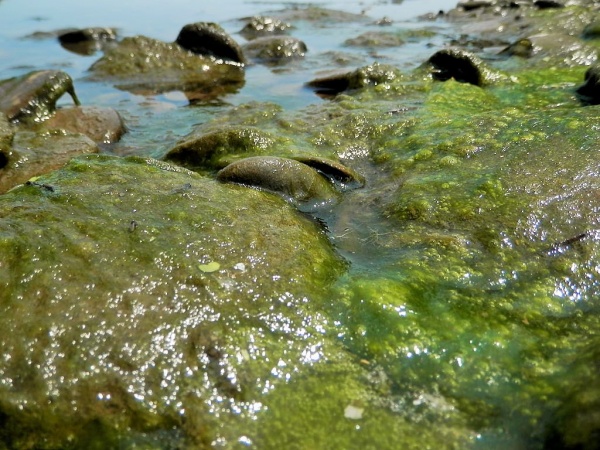Difference between revisions of "Water quality"
Jenny Hill (talk | contribs) |
Jenny Hill (talk | contribs) |
||
| Line 17: | Line 17: | ||
<p> Major sources of man-made phosphorous in the environment include agricultural fertilizers...</p> | <p> Major sources of man-made phosphorous in the environment include agricultural fertilizers...</p> | ||
<p>Compost is a commonly used source of organic material in the engineered soils used in many LID. The phosphorous content of composted materials varies hugely depending upon the material used and the method of production.</p> | <p>Compost is a commonly used source of organic material in the engineered soils used in many LID. The phosphorous content of composted materials varies hugely depending upon the material used and the method of production.</p> | ||
<p>Leaf screens can help separate out a significant source of additional nutrient entering a stormwater treatment facility. Leaf screens should be cleared and the accumulated leaves and debris be disposed of off site. </p> | |||
<p>Many rapidly growing species of vegetation can assimilate significant quantities of phosphorous and nitrogen from the water stream. To prevent the season release of these sequestered nutrients, the dead vegetation should be harvested in the fall, and also disposed of off site.</p> | |||
<p>Phragmites australis, Carex praegracilis, and Carex microptera uptake significantly more total phosphorus (TP) and total nitrogen (TN) mass into harvestable tissue than Typha latifolia, Scirpus validus, and Scirpus acutus. <ref>Rycewicz-Borecki, M., McLean, J. E., & Dupont, R. R. (2017). Nitrogen and phosphorus mass balance, retention and uptake in six plant species grown in stormwater bioretention microcosms. Ecological Engineering, 99, 409–416. https://doi.org/10.1016/j.ecoleng.2016.11.020</ref>.</p> | |||
</div> | </div> | ||
Revision as of 15:21, 17 July 2017
Overview[edit]
Improvements in the quality of stormwater runoff is one of the primary benefits of low impact development strategies.
Nutrients[edit]
Phosphorous
Plants (including algae) require three macro nutrients to grow: Nitrogen, potassium, and phosphorous. Of these three, phosphorous is the often the "growth-limiting" nutrient. i.e. the local environment may have an abundance of nitrogen and potassium, but algae won't develop unless phosphorous is available too.
Major sources of man-made phosphorous in the environment include agricultural fertilizers...
Compost is a commonly used source of organic material in the engineered soils used in many LID. The phosphorous content of composted materials varies hugely depending upon the material used and the method of production.
Leaf screens can help separate out a significant source of additional nutrient entering a stormwater treatment facility. Leaf screens should be cleared and the accumulated leaves and debris be disposed of off site.
Many rapidly growing species of vegetation can assimilate significant quantities of phosphorous and nitrogen from the water stream. To prevent the season release of these sequestered nutrients, the dead vegetation should be harvested in the fall, and also disposed of off site.
Phragmites australis, Carex praegracilis, and Carex microptera uptake significantly more total phosphorus (TP) and total nitrogen (TN) mass into harvestable tissue than Typha latifolia, Scirpus validus, and Scirpus acutus. [1].
See Also[edit]
External Links[edit]
| SEND US YOUR QUESTIONS & FEEDBACK ABOUT THIS PAGE |
- ↑ Rycewicz-Borecki, M., McLean, J. E., & Dupont, R. R. (2017). Nitrogen and phosphorus mass balance, retention and uptake in six plant species grown in stormwater bioretention microcosms. Ecological Engineering, 99, 409–416. https://doi.org/10.1016/j.ecoleng.2016.11.020
